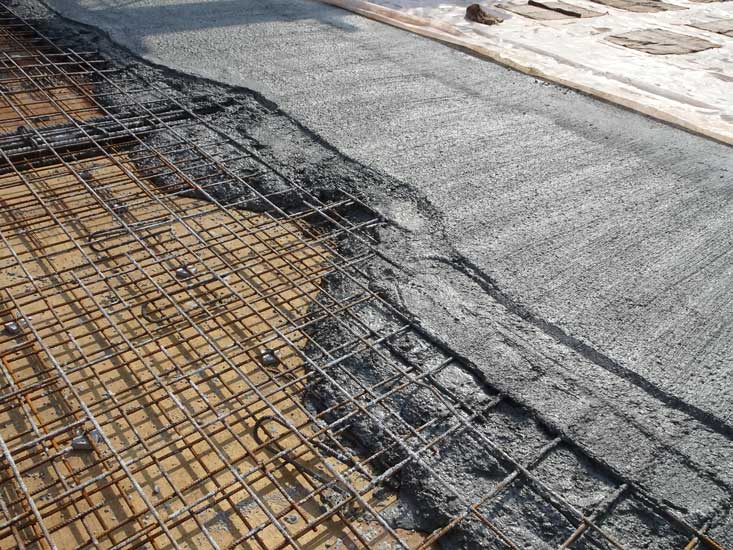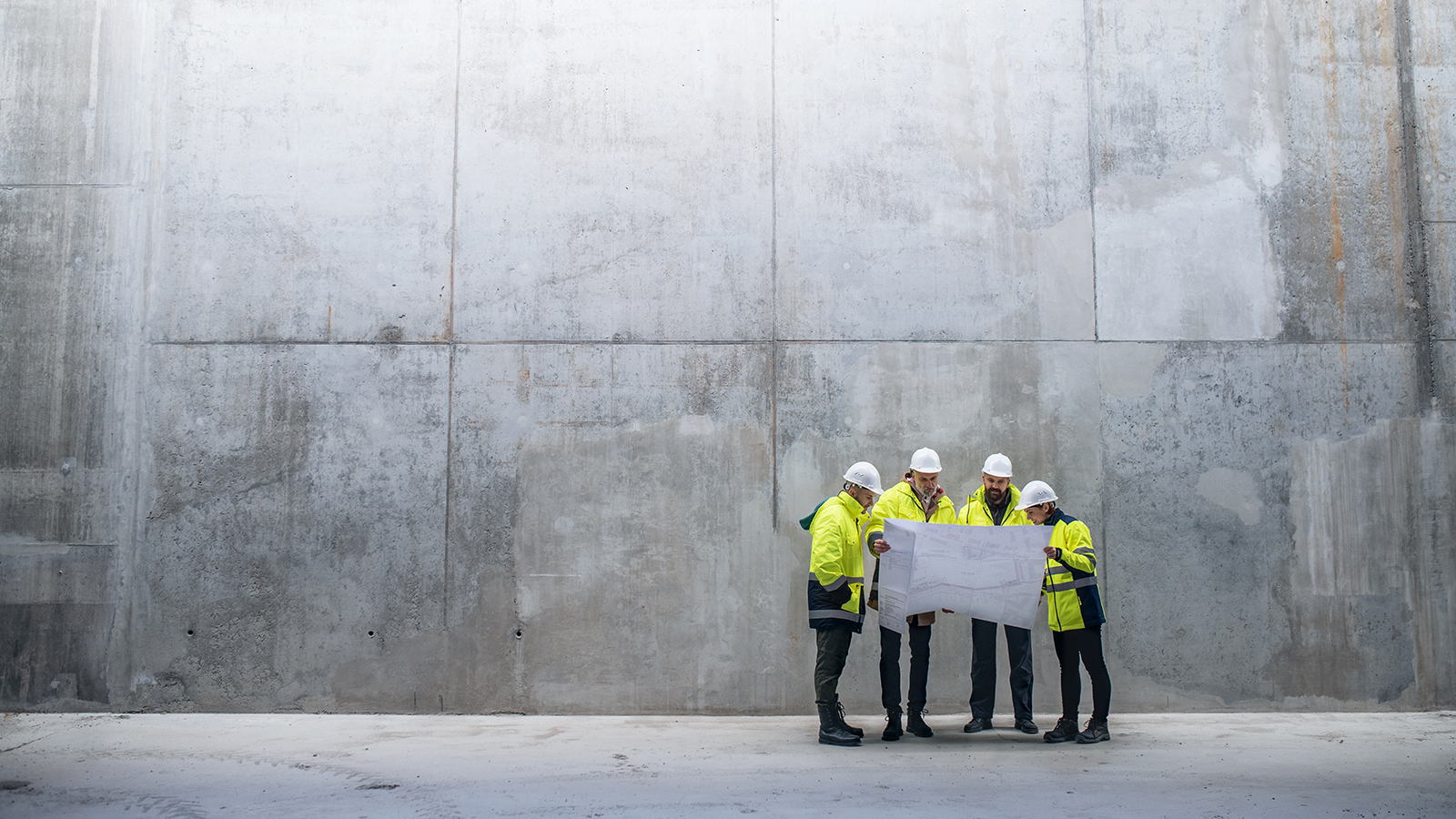The Crucial Duty of Concrete Structure in Structural Stability and Longevity
When it pertains to constructing a home, the foundation is much more crucial than you may assume. Concrete structures provide unparalleled toughness and longevity, ensuring your structure can stand up to different environmental challenges. Without a solid base, you take the chance of potential concerns like changing or cracking, which can endanger safety and security and worth. Recognizing the subtleties of concrete foundations might be the key to protecting your financial investment for years ahead. What should you take into consideration following?
Comprehending the Value of Concrete Foundations
Concrete foundations are vital to the total security of any type of framework, as they supply the crucial support needed to endure various lots and ecological conditions. When you consider developing a home or a business room, the foundation is the very first point you ought to think about. It functions as an obstacle against dampness, protecting your residential or commercial property from water damages. A well-placed concrete foundation also stops settling and changing, which can result in fractures in wall surfaces and floorings. You'll desire to ensure that the foundation is effectively designed and reinforced, as this impacts the durability of your building. Additionally, a strong structure can improve power effectiveness by lowering air leakages. Remember, disregarding the importance of a concrete foundation can bring about costly repair work down the line. So, buying a quality foundation upfront is important for the stability and resilience of your structure.
Advantages of Concrete Structures for Structural Honesty
While several elements add to a building's architectural integrity, concrete structures use unparalleled resilience and strength. You'll value that concrete can endure severe climate problems, withstanding both moisture and temperature level fluctuations. This durability indicates your framework is much less likely to experience breaking or shifting gradually, which can endanger its safety.Additionally, concrete's inherent weight gives a solid base, preventing activity throughout all-natural events like earthquakes or floodings. When you select a concrete structure, you're also selecting reduced upkeep; unlike wood, it will not rot or draw in bugs, saving you money and time in repairs.Moreover, concrete's fire resistance offers added security, ensuring your structure can endure heats without significant damages. In general, purchasing a concrete foundation indicates you're focusing on the long-term stability and stability of your building, making it a sensible selection for any type of building and construction task.
Typical Kinds Of Concrete Foundations
When it concerns building structures, recognizing the usual kinds of concrete structures can aid you make educated choices for your task. One of the most prevalent types include slab-on-grade, crawl room, and complete cellar foundations.A slab-on-grade foundation is an easy, economical alternative, where a thick concrete slab is put directly on the ground. This type functions well in warm environments, as it reduces warm loss.Crawl room structures elevate the home a little over ground, allowing for ventilation and accessibility to plumbing and electric systems. This design can assist protect against dampness issues.Full cellar foundations supply additional living or storage room while offering exceptional structural assistance. They require more excavation and are normally used in colder environments to avoid frost heave.
Variables to Consider When Designing a Concrete Structure

Finest Practices for Installing Concrete Foundations
When you're installing a concrete structure, proper website prep work is important to ensure security (West Coast General Engineering concrete foundation). You'll likewise need to recognize support techniques to enhance toughness and longevity. Lastly, do not overlook the healing process, as it plays a fundamental role in achieving a solid structure
Website Prep Work Importance
Although it may seem uncomplicated, proper site prep work is essential for assuring a solid and sturdy concrete structure. Start by getting rid of the area of any kind of debris, vegetation, or natural material that might endanger the structure's honesty. Next off, examine the soil type and compaction; you may need to excavate or add products to produce a secure base. Degree the ground to ensure also weight circulation and avoid resolving concerns later. Mounting correct drain systems is also necessary to prevent water buildup, which can damage the structure over time. Mark out the foundation's dimensions precisely to guide the pouring procedure. By adhering to these actions, you'll establish the stage for a successful concrete foundation that stands the test of time.
Support Strategies Discussed
As soon as the website is correctly prepared, the next action in guaranteeing a tough concrete here foundation involves carrying out efficient reinforcement techniques. You must start by utilizing steel rebar, which supplies tensile strength and helps avoid fracturing. Lay the rebar in a grid pattern, seeing to it it's elevated utilizing spacers to preserve correct protection. Additionally, consider making use of wire mesh for extra support, specifically in locations based on hefty lots. Do not neglect to connect the rebar junctions securely with wire. For bigger foundations, fiber reinforcement can improve longevity, minimizing the danger of shrinking cracks. Always follow local structure codes and standards to make certain conformity. By applying these support strategies, you'll significantly improve your foundation's strength and durability, laying a strong foundation for your structure.
Curing Process Essentials
To assure your concrete foundation remedies effectively, it is necessary to preserve adequate moisture and temperature problems quickly after putting. Begin by covering the surface area with a damp burlap or plastic sheeting to keep wetness. This maintains the concrete hydrated, preventing splits and making sure toughness. You should additionally monitor the temperature; ideal curing conditions are in between 50 ° F and 90 ° F. If it's as well warm, haze the surface consistently to prevent rapid evaporation. For cool weather, take into consideration making use of insulating coverings to maintain warmth. Go for a treating duration of at the very least seven days, as this is important for ideal toughness development. By complying with these finest techniques, you'll improve your structure's toughness and durability, guaranteeing architectural honesty for several years to find.
Maintenance of Concrete Foundations for Durability
To keep your concrete structure strong and long lasting, regular examinations are necessary. You need to additionally guarantee effective drainage options are in area to protect against water damage. If you spot any fractures, addressing them quickly will save you from larger problems down the line.

Regular Examinations and Assessments
While regular examinations and analyses may appear like a chore, they're crucial for keeping the integrity of your concrete foundation. By regularly looking for fractures, shifts, or signs of wear, you can capture prospective problems prior to they intensify right into costly repair services. Look for any kind of water pooling around the foundation or unusual settling, as these can signal underlying problems. It's additionally important to monitor any modifications in your home's structure, like doors that stick or home windows that do not open smoothly. Keeping a record of your evaluations aids track adjustments in time, permitting positive upkeep. Eventually, these analyses guarantee your foundation continues to be stable, sustaining the long life and safety of your entire structure. Don't neglect this essential facet of homeownership!
Reliable Drainage Solutions
Regular evaluations can reveal issues like drainage problems that could jeopardize your concrete structure's stability. To avoid water buildup, assure your gutters and downspouts straight water away from the foundation. Installing French drains pipes can efficiently reroute surface and groundwater, reducing stress on your foundation walls. Additionally, grading the dirt around your home helps assure that water moves away, as opposed to pooling near your foundation.Consider using sump pumps in areas vulnerable to flooding, as they actively get rid of excess water. Routinely examine for blockages in drainage systems and clear them immediately. You'll safeguard your structure's honesty and durability by taking these positive procedures. Remember, effective drain remedies are crucial for preserving a strong, long lasting concrete foundation.
Trigger Split Fixes
When you notice splits in your concrete structure, resolving them immediately is essential for maintaining its durability. Tiny cracks can promptly evolve into bigger issues, compromising the structural integrity of your home. Regularly check your structure for indicators of damage, such as horizontal or upright splits. If you detect any kind of, do not wait-- repair them immediately. You can make use of epoxy injections or concrete patching substances, which are effective for securing splits. Always comply with the supplier's instructions and take into consideration consulting a specialist for significant damage. Bear in mind, timely repair work not just improve your structure's resilience however additionally save you money over time by avoiding more substantial repairs down the line. Stay proactive, and your structure will stay solid and protected.
Attending To Usual Issues With Concrete Foundations
Concrete structures can face numerous problems over time, making it critical to recognize and resolve them without delay. Among one of the most typical issues is fracturing, which can happen due to temperature level variations or resolving soil. If you notice splits, it's necessary to examine their size and deepness; little splits can frequently be sealed, while larger ones might need go expert evaluation.Water intrusion is one more significant problem. Excess wetness can lead to mold and mildew development and structural degeneration. Guarantee correct drainage around your structure to alleviate this threat. Furthermore, look for indicators of shifting or bowing walls, as this can indicate underlying concerns with your foundation's stability.Regular examinations are fundamental to capture these issues early. decorative concrete epoxy If you spot any worrying indicators, do not be reluctant to get in touch with a foundation expert. By remaining proactive, you can maintain the honesty and durability of your concrete structure, guaranteeing your home remains safe and safe and secure.
Regularly Asked Questions
Exactly How Does Soil Kind Affect Concrete Structure Performance?
Dirt type greatly affects concrete structure performance. If you have actually got extensive clay, for instance, it can trigger moving and splitting. Sandy soil might cause working out. Comprehending your dirt assists ensure a stable structure.
Can Concrete Foundations Be Repaired if Damaged?
Yes, you can fix broken concrete foundations. Depending upon the level of the damage, methods like epoxy injection or slab jacking can recover stability. It's best to get in touch with a professional for efficient remedies.
What Is the Common Life Expectancy of a Concrete Structure?
A concrete foundation commonly lasts 30 to 100 years, depending on aspects like dirt problems, climate, and maintenance. You'll wish to watch on it to ensure it stays in excellent form throughout its lifespan.
Are There Alternative Materials to Concrete for Foundations?
Yes, there are alternatives to concrete for structures, like steel, hardwood, or perhaps recycled materials. Each option has unique benefits and drawbacks, so you should consider your job's certain demands when choosing the appropriate material.
Just How Does Climate Influence Concrete Foundation Toughness?
Climate significantly influences concrete foundation resilience (West Coast General Engineering concrete foundation Rancho Cucamonga). Severe temperature levels, moisture, and freeze-thaw cycles can damage the product, causing fractures and architectural problems. You need to think about regional climate problems when planning your foundation to ensure long-lasting performance